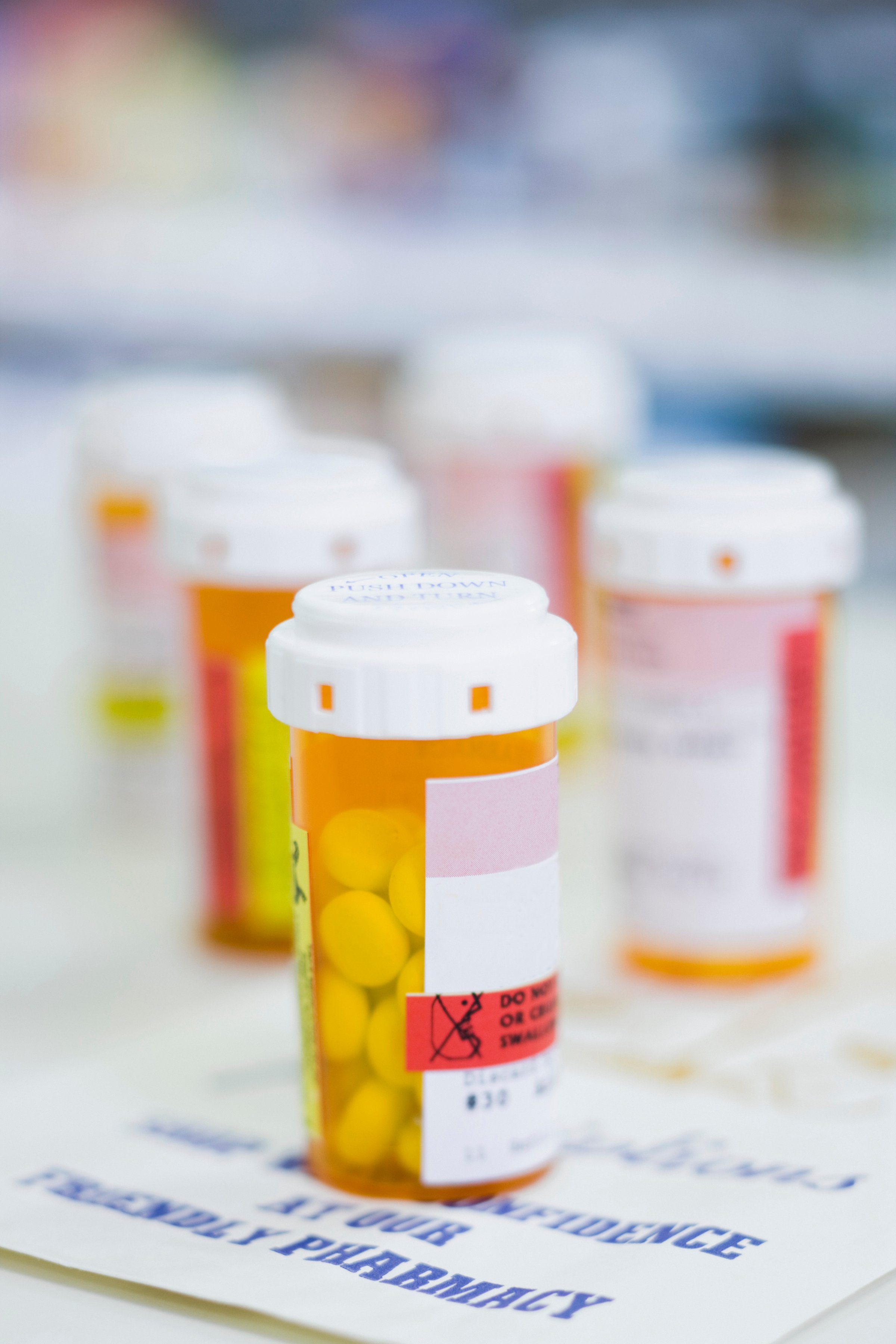
It’s hard to imagine a time when there wasn’t a pill—sometimes dozens of different ones—to treat so many health conditions. Today, 70% of Americans take at least one prescription drug and more than half take two, according to the Mayo Clinic.
While the healing powers of modern medicine are pretty awesome, you still need to be cautious when it comes to any drug. The Food and Drug Administration (FDA) reports that medication errors cause at least one death every day and injure 1.3 million people annually.
HEALTH.COM: 14 Reasons You’re Always Tired
In honor of Talk About Your Medicines Month, read up on common mistakes to avoid with your prescriptions.
You get the brand name over generic
Yes, they’re cheaper, but generic drugs are just as effective as the brand name. To be approved by the FDA, a generic drug must have the same active ingredients as the original. The only difference is the inactive ingredients, like dye or preservatives, which don’t affect the action of the drug. “Small variations in the generic are permissible,” says Kim Russo, PharmD, chief clinical officer at VUCA Health, a medication video service available at certain pharmacies nationwide. “Most of the time we don’t even medically notice it.” If you don’t tolerate one of the inactive ingredients well, then you might need the brand name. Otherwise, save yourself the money and go with the generic.
You mix your meds with the wrong foods (or drinks)
Always check what foods or drinks could interact with your medicine. One to watch out for: grapefruit and grapefruit juice. “As many as 50 drugs on the market can be affected,” Russo says. Depending on the drug, grapefruit juice can reduce or increase absorption—the latter could lead to overdose. Then there are certain drugs that shouldn’t be taken with calcium-rich foods because they interfere with your body’s absorption of the medication, Russo says. Plus, there are medications that cause you to lose or retain potassium, so you’ll want to talk to your doctor or pharmacist about whether you need to start (or stop) eating certain foods. And you should ask your doctor if it’s OK to drink alcohol while taking your prescription. “Alcohol can turn possible mild side effects into dangerous ones,” Russo says. The FDA has more info on bad food-drug combos.
HEALTH.COM: 16 Worst Birth Control Mistakes
You don’t check your Rx label at the pharmacy
To save yourself the stress of a medication error, make sure you have the right prescription before you leave the pharmacy. If your pharmacist only asks for your name at the counter, provide another identifier, like a birth date or address. That way you’ll know the drug is filled under the correct person, Russo says. Another good idea: open your bag. “I would read the label and open the prescription to see if you recognize it,” Russo says. A different color or shape may just mean the drug is coming from a new generic manufacturer, but it never hurts to be safe.
You don’t talk to your pharmacist
Most pharmacists will ask if you have questions about your medication. But when’s the last time you actually voiced one? It’s never a good idea to rush through picking up a new prescription. That’s the time to find out what the medicine is for as well as the benefits and possible side effects or drug interactions, Russo says. If you’ve been on the medication a while and have noticed unexplained changes lately, say a rash or constant headache, that’s also a good time to speak up. On three or more medications? “It’s a great idea once a year to make an appointment with your pharmacist to review them,” Russo suggests.
HEALTH.COM: 15 Tips for Saving Money on Prescription Drugs
You store your meds in the wrong spots
The number one worst place you could keep your medication is the bathroom. That’s because moisture can degrade medicine, Russo says. Medications also need to be protected from light. “That’s why prescription vials are the amber color, to block UV light,” Russo says. Still, you should keep medication in a dark place, especially if you have a pill organizer that’s clear and light can get through. Certain drugs shouldn’t be taken out of the vial at all. Some medications, like insulin, might need to be refrigerated initially, but can be taken out to warm up before injecting and then stored at room temperature for a set number of days. Just keep in mind some drugs are meant to be kept in the fridge and they can lose their effectiveness if left at room temperature for even a few hours, Russo says. Check with your pharmacist to know how long is too long.
You don’t dispose of old meds properly
Most pills remain effective up to two years after the expiration date, Russo says. When it’s time to get rid of them, though, don’t count on the toilet as your go-to disposal method. “Flushing certain cardiac, seizure, or hormone medications can be very harmful to the environment,” Russo says. Only a few medications, including ones for pain, are recommended by the FDA for disposal by flushing. The rest you should throw in a plastic bag with kitty litter or used coffee grounds so kids or pets won’t be tempted to eat them. Then, the bag’s ready for the trash. You could also ask your pharmacist about upcoming medicine take-back programs.
HEALTH.COM: 27 Mistakes Healthy People Make
More Must-Reads From TIME
- The 100 Most Influential People of 2024
- The Revolution of Yulia Navalnaya
- 6 Compliments That Land Every Time
- Stop Looking for Your Forever Home
- If You're Dating Right Now , You're Brave: Column
- The AI That Could Heal a Divided Internet
- Fallout Is a Brilliant Model for the Future of Video Game Adaptations
- Want Weekly Recs on What to Watch, Read, and More? Sign Up for Worth Your Time
Contact us at letters@time.com